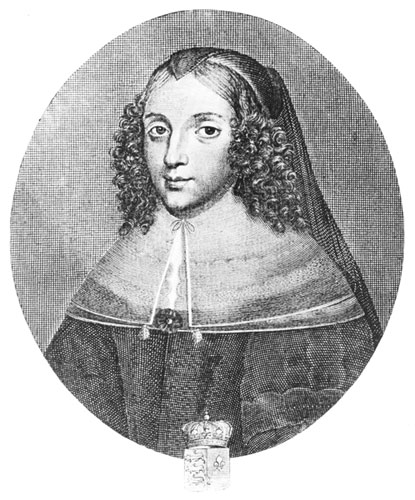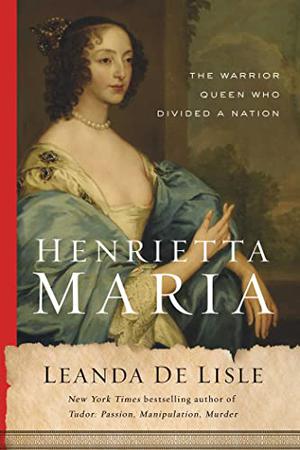The belief that Protestantism is responsible for the work ethic that built empires and the emergence of democracy are amongst our most treasured national myths. The converse of this is that Henrietta Maria, the popish Catholic, must be responsible for Charles' authoritarianism. We have bought into the deep state conspiracy theories of the seventeenth century. We have also forgotten the complexity and contradictions of the past. Many of those who fought hardest for 'liberty' against Charles denied it to the slaves they shipped from Africa to the Americas, and to the Catholic Irish they cleansed from their lands. There was no monopoly on virtue or sin.Henrietta's mother Marie de' Medici, is revealed to be the great regent she really was. So often Queen Marie is dismissed as being "stupid" in histories of the time. Henri IV would never have designated Marie to be regent in case of his death if he had thought her hopelessly ignorant and helpless. Queen Marie had great devotion to the Virgin Mary, seeing her role as being like that of the Mother of God, the conduit of power between the king and his people. As regent for her son Louis XIII she was determined to keep France out of wars, especially wars with other Catholic countries. Her older daughters, Elisabeth, Queen of Spain and Christine, Duchess of Savoy, had been brought up with Marian devotion and saw their roles in their adopted countries as being active rather than passive. Henrietta Maria tackled the insurmountable task of converting the British Isles back to Catholicism in the same light.
From author Leanda de Lisle at Aspects of History:
Charles was said to have been the only English monarch ever crowned in white. To his enemies, he was now the ‘White King’ of ancient prophecy, a doomed tyrant. To his supporters the white robes would instead become a symbol of his innocence. Today the popular image of Charles is just as extreme. It is of a weak and failed king. The real Charles was resilient and courageous: he would prove a tough enemy to beat in the conflict ahead: with Henrietta’s Maria help.
The Queen was not in Holland simply to save her own skin, but to act as Charles’s chief diplomat and party leader in Europe, as well as his arms buyer. It was a formidable task, and in the Dutch republic she faced anti-royalist prejudice. When she tried to sell royal jewels obstacles were put in her way. In one letter she warned Charles, ‘Dear Heart…can you send me a warrant under your hand, which gives me full power to deal with my jewellery, since the merchants say a woman cannot sell jewellery during the lifetime of her husband’. Once they were sold she was confident she could ‘buy gunpowder, arms and cannon here’.
Charles responded quickly and as she began using the money to buy arms, she also deployed her political skills to undermine parliament’s efforts to gain European support for their cause. In a further letter Henrietta Maria informs the French foreign Minister, that ‘The English rebels, under the name of Parliament’ had sent an agent to Holland, claiming that ‘the king and I’ wanted to re-establish Catholicism in England: ‘I hear they have also sent an agent to France on the same pretext of religion. Whoever he is I hope he will not be heard nor received, since he comes from rebels against God and against their king’.
There was no profound ethnic or religious hatred amongst the people of England and Wales. The numbers of Catholics were too few. The English civil war a war between Protestants over the nature the Church of England, and where the balance of power between king and parliament should lie. But Charles’s enemies had not given up their narrative of Counter Reformation threat, with Henrietta Maria supposedly paving the way for a Catholic takeover.
The real threat was only to the rebels, and from the success of her diplomacy. In a later letter to the French minster, Henrietta Maria thanked him for ‘the services you give me’. What kind of services is indicated months later when she expresses her gratitude for his stopping of a shipment of ‘arms prepared for the rebels’.
The queen returned to England in February 1643 with men, money and arms. After her dangerous landing in Yorkshire she spent months raising royalist moral in the north, eating in sight of the soldiers, and recruiting men. The royalists had gained superiority in Yorkshire by late June when Charles called for her to join him in his war-time capital at Oxford.
Parliament sent cavalry to intercept the queen and her men, but she escaped again, and still en-route to meet Charles, the ‘generalissima’ (as she joking called herself) captured Burton on Trent in a ‘bloody’ and ‘desperate’ battle.
After the war turned against Charles in 1644 Henrietta Maria returned to France, and despite being seriously ill, she continued to raise money and arms. The defeat of the king at Naseby in Northamptonshire in 1645, proved, however, to be a decisive propaganda, as well as military, victory for his enemies. His correspondence was captured and thirty-seven letters between Charles and the queen were carefully chosen and edited to ‘prove’ that he was the mere vassal of a foreign, Catholic wife.
These letters were published under the title the King’s Cabinet Opened along with a commentary depicting Henrietta Maria as a trans-gender perversion of nature. It pointed to shocking examples of her mannishness, such as when ‘you see she marcheth at the head of an army and calls herself the generalissima’! ‘This’ one parliamentary journalist wrote, ‘is the Dear Heart which hath cost him almost three Kingdoms’ and the true ‘wearer of the breeches’.
The maxim ‘cherchez la femme’ (seek out the woman), already held true in England when looking for where to cast the blame for failures in male leadership. Margaret of Anjou had ridden with armies in defense of her mentally ill husband, Henry VI, during the Wars of the Roses. After he died he was judged a saint, while she was blamed for the wars and condemned by Shakespeare as a ‘she wolf of France’.
After Charles’s kingdoms were lost, and he was executed, he too was judged a saint. The title of Charles the Martyr is largely forgotten. Yet Henrietta Maria remains the caricature of parliamentary propaganda: the victim of our continued and unacknowledged sexual prejudices. Her real fault, as, Charles acknowledged, was merely ‘that she is my wife’. (Read more.)
I encourage everyone with an interest in the Stuarts and English history to read this beautifully-written, meticulously researched biography of a greatly misunderstood Queen.
 |
| Charles I |

.png) |
| Mary the Princess Royal, James Duke of York, Charles Prince of Wales, Princess Elizabeth and Princess Anne |
|
 |
| Anne of Austria presents her sons Philippe and Louis XIV to their aunt Henrietta Maria after her escape from England |
 |
| Henrietta Maria as a widow |
NOTE: I received Henrietta Maria: The Warrior Queen Who Divided a Nation by Leanda de Lisle from the publisher in exchange for my honest opinion.



















No comments:
Post a Comment